I always felt like I was missing out whenever my family would gather around a steaming pot of Binagoongan na Baboy, their faces lighting up with every spoonful while I had to stay away due to my bagoong (shrimp paste) allergy. But let me tell you, the day I discovered a hypoallergenic bagoong alternative (that's another recipe) changed my life.
Now this rich, fork-tender pork belly dish has become my ultimate comfort food, the one I crave most especially during rainy days. There's something delicious about how the meat slowly simmers until it's melt-in-your-mouth tender, while the sauce - a perfect balance of savory, tangy, and slightly spicy flavors - reduces into this irresistible coating that makes you want to eat cup after cup of rice.
If this binagoongan na baboy recipe could convert someone with a bagoong allergy into a devoted fan, you're going to absolutely love it!
Jump to:

Why You'll Love This Recipe
- One-pan wonder: Everything cooks in a single pan for easy cleanup
- Rich umami flavor from the combination of pork belly and shrimp paste
- Perfectly balanced sweet, salty, and slightly spicy taste
- Tender, melt-in-your-mouth pork pieces
- Authentic Filipino comfort food that's perfect for family meals
- Can be made ahead and tastes even better the next day
Ingredients
This recipe combines pork belly for its rich texture and flavor with shrimp paste for deep umami. Tomatoes add natural sweetness and acidity, while onions and garlic create a savory base. The chilies provide gentle heat balanced by a touch of sugar, and vinegar cuts through the richness while helping tenderize the meat.
These ingredients work together to create the perfect balance of savory, tangy, sweet, and spicy flavors that make this dish irresistible.
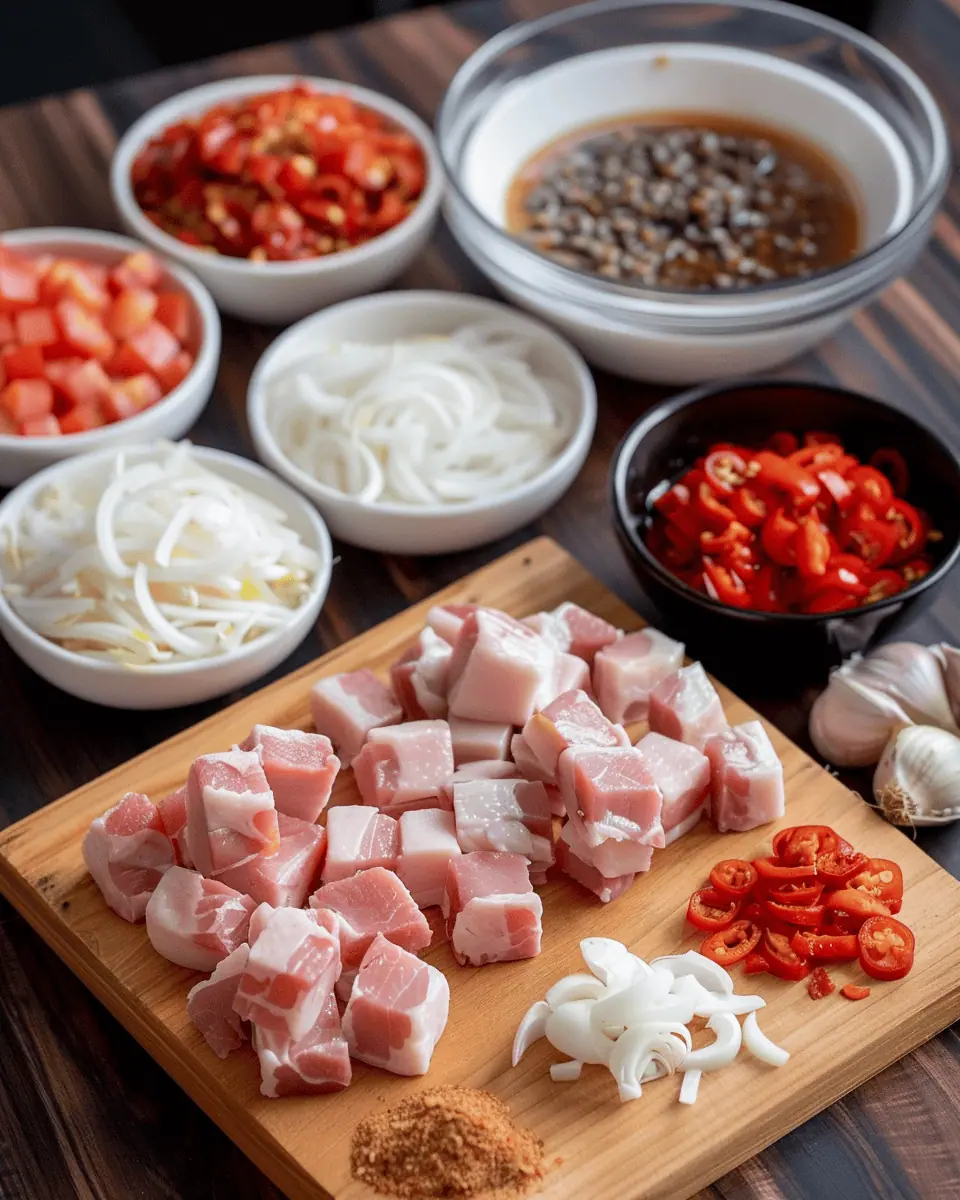
For the Main Dish:
- 2 pounds pork belly, cut into 1-inch cubes
- 2 tablespoons sauteed shrimp paste (ginisang bagoong alamang)
- 2 large tomatoes, chopped
- 1 medium onion, chopped
- 4 cloves garlic, minced
- 5 Thai chili peppers, chopped
- ¼ cup vinegar
- 1 cup water
- 1 teaspoon sugar
- 1 tablespoon cooking oil
- Salt and pepper to taste
Optional Accompaniments:
- 2 medium eggplants
- Steamed rice
- Green mango slices
Equipment
- Large heavy-bottom pan or kawali: For even heat distribution and proper sauce reduction
- Sharp knife and cutting board: For precise meat and vegetable cutting
- Measuring spoons and cups: For accurate ingredient portions
- Wooden spoon or spatula: For stirring without scratching the pan surface
- Meat thermometer: To ensure proper cooking temperature (optional but helpful)
- Rice cooker: For preparing the perfect steamed rice accompaniment
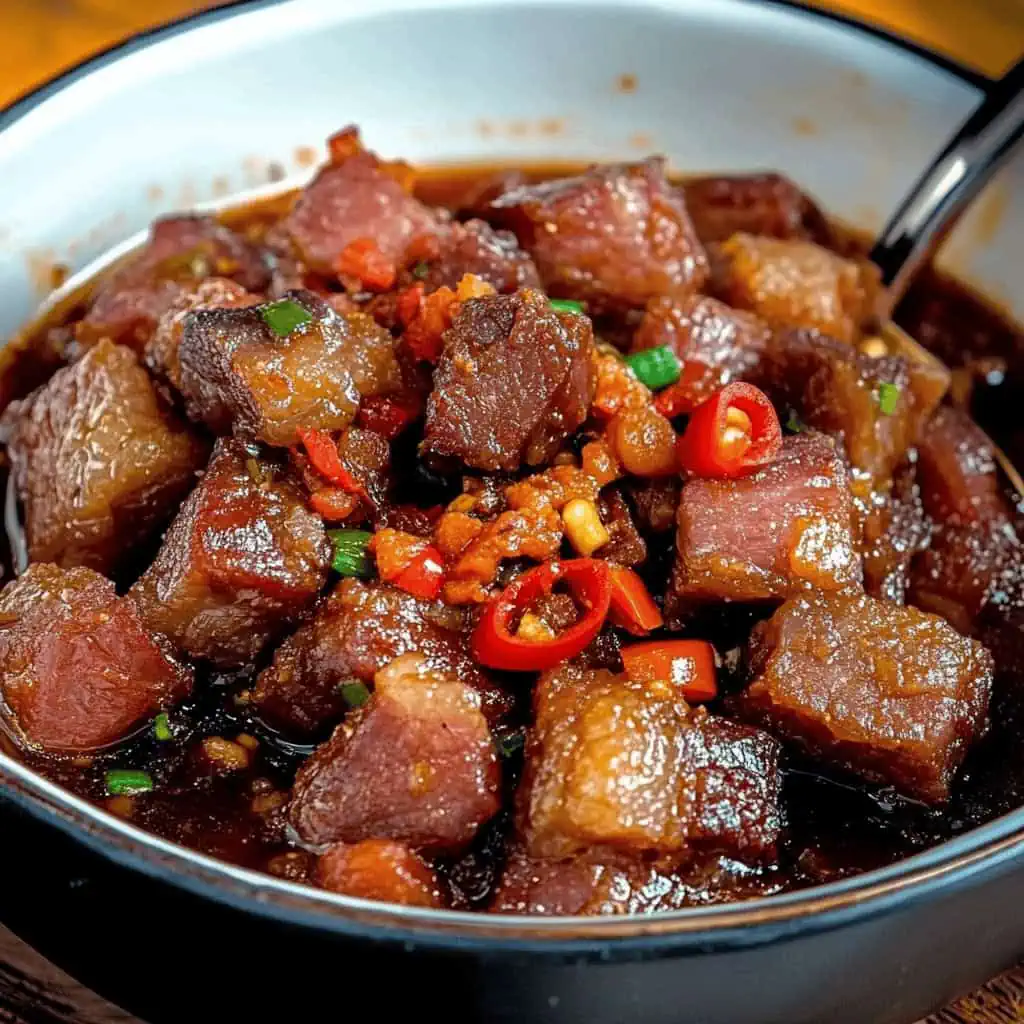
How To Make
- Prep work: Cut pork belly into 1-inch cubes. Prepare all vegetables and aromatics: chop tomatoes and onions, mince garlic, and chop chilies. Allow ingredients to reach room temperature for even cooking.
- Brown the pork: Heat oil in a large heavy-bottom pan over medium heat (180°C/350°F). Add pork cubes and brown for 8-10 minutes, ensuring internal temperature reaches 145°F (63°C). This step builds essential flavor for the dish.
- Build the base: Add onions and garlic, sauté until translucent, about 3-4 minutes. Add shrimp paste and cook for 1-2 minutes until fragrant. Add tomatoes and cook until softened, about 5 minutes.
- Add acids and simmer: Pour in vinegar and do not stir for 2-4 minutes to let acids cook off and mellow. Add water and chili peppers. Reduce heat to low (160°C/320°F) and simmer covered for 45 minutes or until pork is fork-tender.
- Finish the dish: Season with salt, pepper, and sugar to taste. The sauce should be reduced and slightly thick. Ensure internal temperature of pork reaches 165°F/74°C for food safety.
- Rest and serve: Let rest for 5 minutes before serving with hot steamed rice.

Tips from Lola's Kitchen
- Choose the right cut: Select pork belly with a good meat-to-fat ratio (about 60:40) for the best texture and flavor
- Never skip the browning step: This builds essential flavor and seals in juices
- Patience with vinegar: Let the vinegar boil without stirring to remove the sharp acidic taste
- Bagoong matters: If using raw bagoong, cook it longer (3-5 minutes) until color darkens and smell mellows
- Low and slow: For extra tender meat, simmer an additional 15-20 minutes on low heat
- Taste as you go: The saltiness of different shrimp pastes varies greatly, so adjust seasonings accordingly
Substitutions
- For the pork: Pork shoulder can be used for a leaner option, or chicken thighs for a lighter version
- For the vinegar: Apple cider vinegar offers a milder flavor than white vinegar
- For the chilies: Regular chili peppers work well instead of Thai chilies for less heat
- For the sugar: Brown sugar can replace white sugar for deeper caramel notes
- For the shrimp paste: In a pinch, fish sauce mixed with anchovy paste can substitute, though the flavor profile will change
Troubleshooting
Meat is tough:
- Solution: Simmer longer on low heat
- Add ¼ cup water if needed to prevent drying out
- Cut pork into smaller pieces next time for faster cooking
Sauce too salty:
- Solution: Add a quartered potato to absorb excess salt (remove before serving)
- Add a teaspoon of sugar to balance the saltiness
- Dilute with a small amount of water or broth
Too spicy:
- Solution: Add a splash of coconut milk to mellow the heat
- Serve with extra rice to balance the spiciness
- Remove some of the chilies if possible
Sauce too thin:
- Solution: Simmer uncovered for 5-10 minutes to reduce
- Mix ½ teaspoon cornstarch with 1 tablespoon water and stir in
Sauce too thick:
- Solution: Add water or chicken broth, 2 tablespoons at a time
Storage & Reheating
- Refrigerate: Store in an airtight container for up to 3 days. The flavor actually improves overnight!
- Freeze: Portion in freezer-safe containers for up to 2 months
- Thaw: Overnight in refrigerator for best texture
- Reheat on stovetop: Over medium-low heat, stirring occasionally
- Reheat safety: Ensure temperature reaches 165°F/74°C throughout
- Revive texture: Add a splash of water if sauce is too thick after storage
- Freshen flavor: Add a small squeeze of lemon juice when reheating to brighten flavors

FAQ
Can I make this dish less fatty?
Yes, trim excess fat from pork belly before cooking or use pork shoulder instead. You can also refrigerate the finished dish and skim off hardened fat before reheating.
How spicy is this dish?
Moderately spicy with 5 chilies. For mild flavor, use only 1-2 chilies or remove seeds. For extra spicy, double the amount or use bird's eye chilies.
Can I make this in advance for a party?
Absolutely! The flavors actually improve when made 1-2 days ahead. Reheat gently on the stovetop, adding a little water if needed.
What's the best shrimp paste to use?
Ginisang bagoong alamang (sautéed shrimp paste) is recommended as it's already cooked and seasoned. Brands like Barrio Fiesta or Kamayan are widely available and good quality.
Can I use a pressure cooker or Instant Pot?
Yes! Brown the pork first, then add all ingredients and cook on high pressure for 25 minutes with natural release for tender meat in less time.
How do I know when the pork is done?
Pork should be fork-tender, meaning you can easily pierce it with a fork. The internal temperature should reach 165°F/74°C for food safety.
What sides go well with this dish?
Traditional sides include steamed rice, fried eggplant, green mango slices, or a simple vegetable stir-fry like kangkong (water spinach).
Can I reduce the amount of oil in this recipe?
While some fat is needed for flavor, you can drain excess oil after browning the pork or use a leaner cut like pork shoulder.
Related
Looking for other recipes like this? Try these:
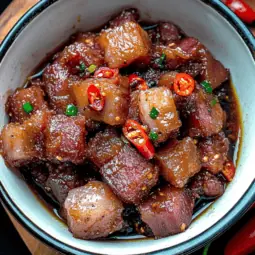
Binagoongan na Baboy (Filipino Pork in Shrimp Paste)
Equipment
- Large heavy-bottom pan (kawali) For even heat distribution and proper reduction
- Sharp knife and cutting board (kusilyo at sangkalan) For precise meat and vegetable cutting
- Measuring spoons and cups (panukat) For accurate ingredient portions
- Wooden spoon or spatula For stirring without scratching the pan
- Meat thermometer To ensure proper cooking temperature (optional)
- Rice cooker - For preparing the perfect steamed rice accompaniment
Ingredients
For the Main Dish:
- 2 pounds pork belly liempo, cut into 1-inch cubes
- 2 tablespoons sauteed shrimp paste ginisang bagoong alamang
- 2 large tomatoes chopped (kamatis)
- 1 medium onion chopped (sibuyas)
- 4 cloves garlic minced (bawang)
- 5 Thai chili peppers chopped (siling pangsigang)
- ¼ cup vinegar suka
- 1 cup water tubig
- 1 teaspoon sugar asukal
- 1 tablespoon cooking oil
- Salt and pepper to taste asin at paminta
Optional Accompaniments:
- 2 medium eggplants talong
- Steamed rice kanin
- Green mango slices hilaw na mangga
Instructions
- Begin by cutting pork belly into 1-inch cubes (Hatiin ang liempo ng 1-pulgadang sukat). Prepare all vegetables and aromatics: chop tomatoes and onions, mince garlic, and chop chilies. Allow ingredients to reach room temperature.
- Heat oil in a large heavy-bottom pan over medium heat (180°C/350°F). Add pork cubes and brown for 8-10 minutes (Igisa ang liempo hanggang maging brown), ensuring internal temperature reaches 145°F (63°C).
- Add onions and garlic, sauté until translucent, about 3-4 minutes (Igisa ang sibuyas at bawang hanggang malabo). Add shrimp paste and cook for 1-2 minutes until fragrant (Idagdag ang bagoong at lutuin hanggang mabango). Add tomatoes and cook until softened, about 5 minutes (Idagdag ang kamatis at lutuin hanggang lumambot).
- Pour in vinegar and do not stir for 2-4 minutes to let acids cook off (Ibuhos ang suka at huwag haluin). Add water and chili peppers. Reduce heat to low (160°C/320°F) and simmer covered for 45 minutes or until pork is tender (Pakuluan ng takip hanggang lumambot ang karne).
- Season with salt, pepper, and sugar to taste (Timplahan ng asin, paminta, at asukal). The sauce should be reduced and slightly thick. Ensure internal temperature of pork reaches 165°F/74°C (Siguraduhin na umabot sa 165°F/74°C ang init sa loob ng karne).
- Let rest for 5 minutes before serving with hot steamed rice (Palamigin ng 5 minuto bago ihain kasama ng mainit na kanin).
- For reheating, ensure temperature reaches 165°F/74°C throughout (Kapag iinitin, siguraduhing umabot sa 165°F/74°C ang init sa loob).
Tips from Lola's Kitchen
- Choose pork belly with a good meat-to-fat ratio for the best texture
- Never skip the browning step - it builds essential flavor
- Let the vinegar boil without stirring to remove the sharp acidic taste
- If using raw bagoong, cook it longer (3-5 minutes) until color darkens
- For extra tender meat, simmer an additional 15-20 minutes
Nutrition
The Story Behind Binagoongan na Baboy (Filipino Pork in Shrimp Paste)
Like many beloved Filipino dishes, Binagoongan Baboy was born from our ancestors' ingenuity with preservation. In coastal communities across the Philippines, where both pork and seafood were abundant, bagoong (fermented shrimp paste) served not just as a condiment but as a vital preservation method. This humble beginning transformed into one of Filipino cuisine's most distinctive comfort foods.
What makes Binagoongan Baboy special is how it marries pork belly, a Chinese influence from centuries of trade, with bagoong, an indigenous Filipino ingredient that predates colonial times. The dish perfectly captures the Filipino talent for blending foreign influences with local ingredients. While most cultures might hesitate to combine pork with fermented seafood, Filipino cooks recognized that bagoong's intense umami would transform simple braised pork into something extraordinary.
In traditional Filipino households, Binagoongan Baboy has always been a practical dish. Using pork belly (liempo) meant families could stretch their meat budget, as this cut was once considered humble fare. The addition of bagoong not only enhanced flavor but also helped preserve the dish in the days before refrigeration. Today, it remains a favorite "ulam" (viand) in Filipino homes, though it's now enjoyed more for its rich, complex flavors than for practical reasons.
Modern Filipino home cooks have adapted this classic in countless ways. Some add coconut milk for a creamy variation, others make it extra spicy with bird's eye chilies, and some serve it with the pork crispy-fried. But the soul of the dish remains unchanged - it's still that perfect marriage of pork and bagoong that makes Filipinos reach for extra rice and keeps family members lingering at the dinner table.
Whether you're discovering this dish for the first time or recreating your family's version, Binagoongan Baboy tells the story of Filipino cuisine - resourceful, bold in flavor, and deeply connected to both land and sea. It's comfort food that carries centuries of history in every bite.
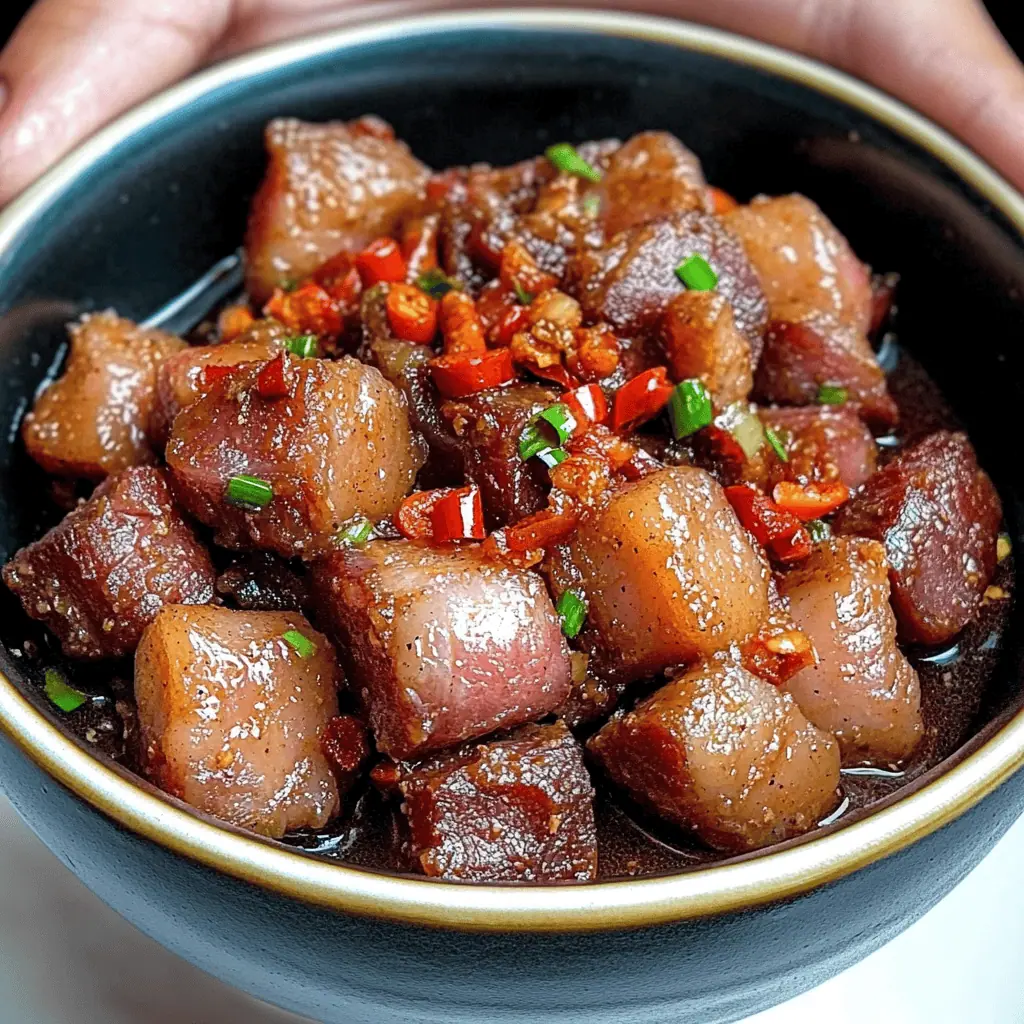






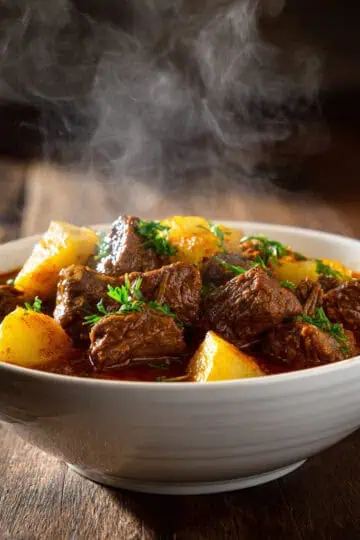
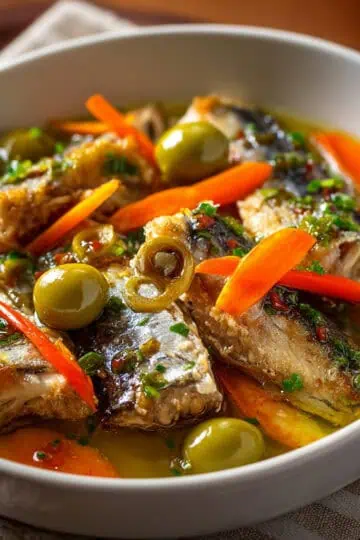
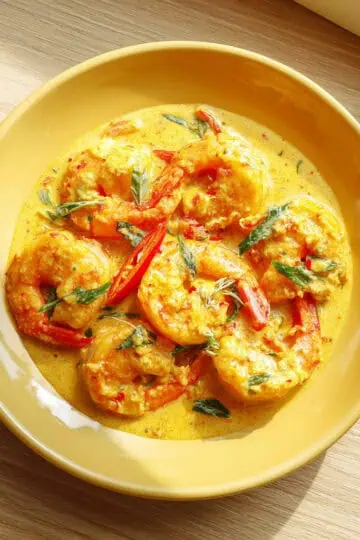
Comments
No Comments